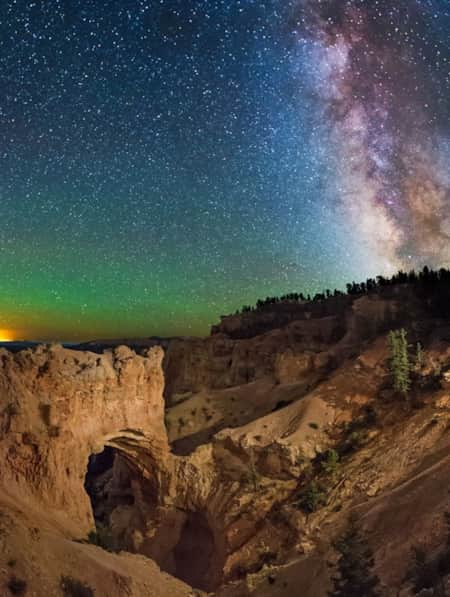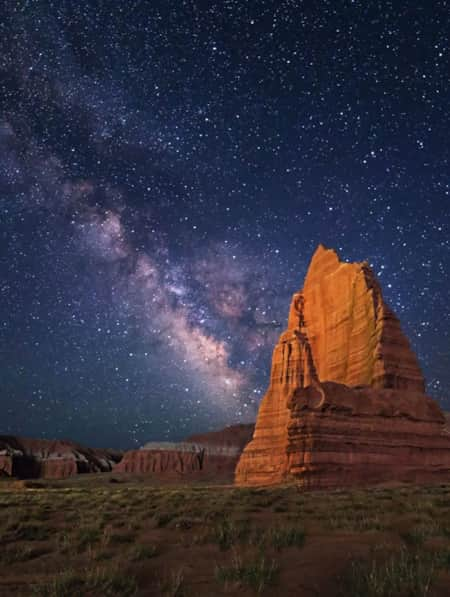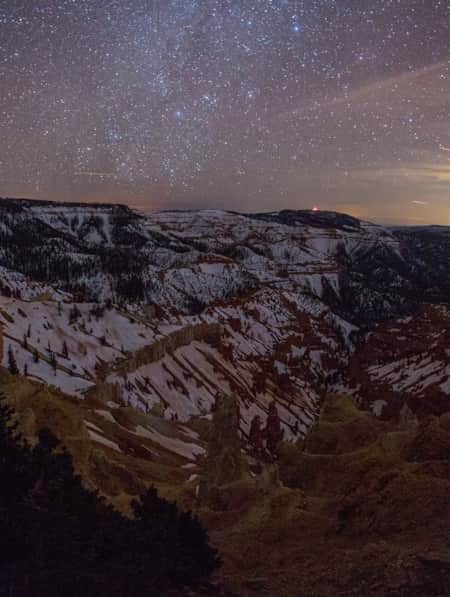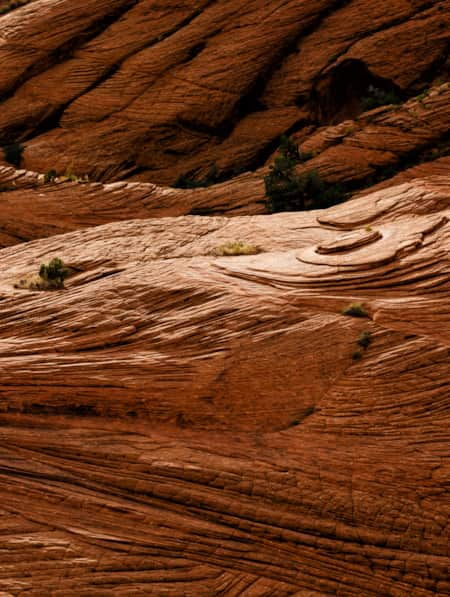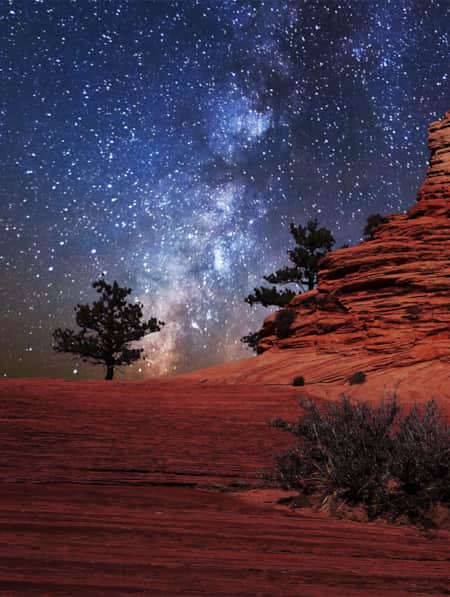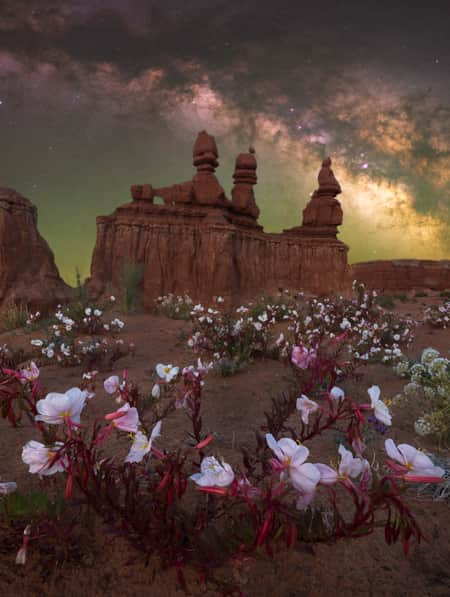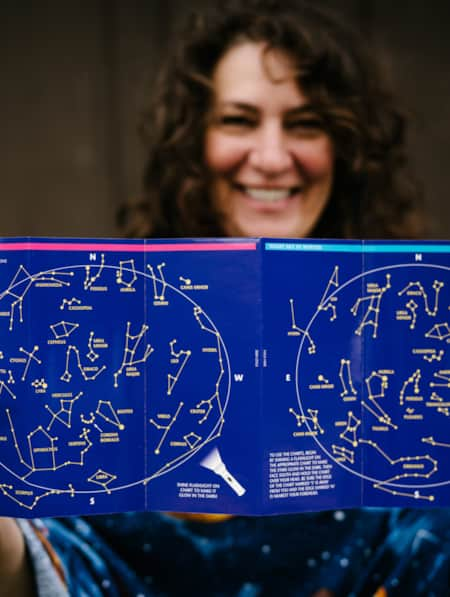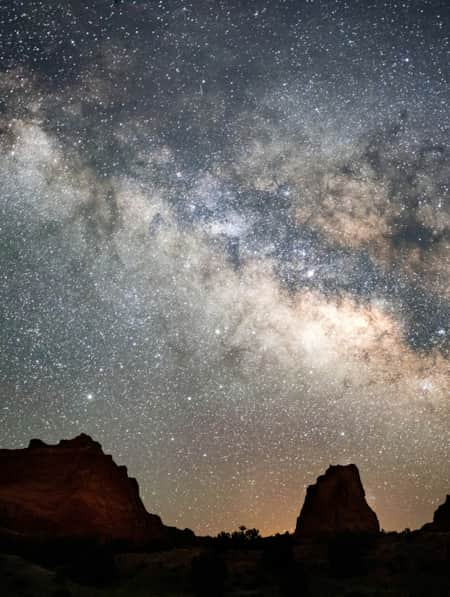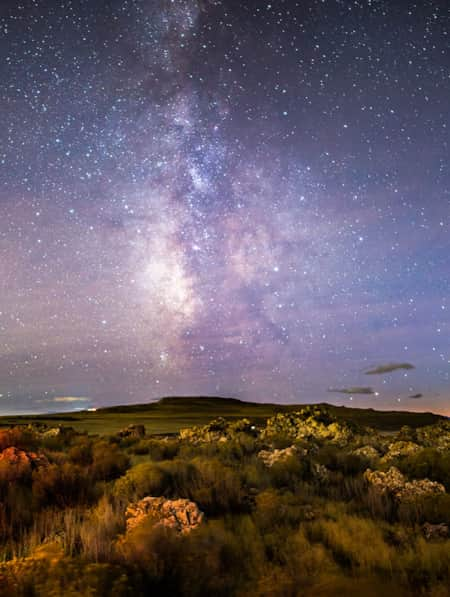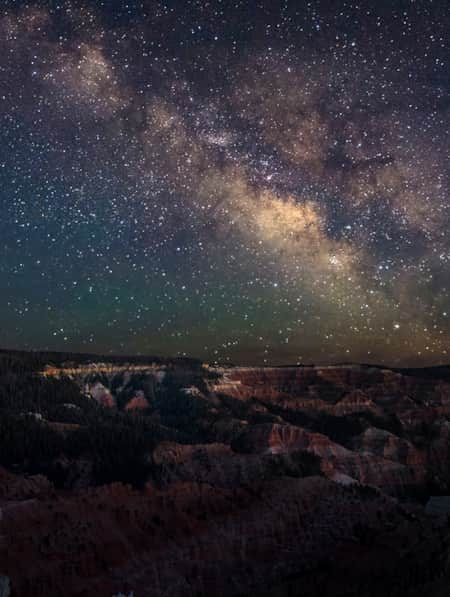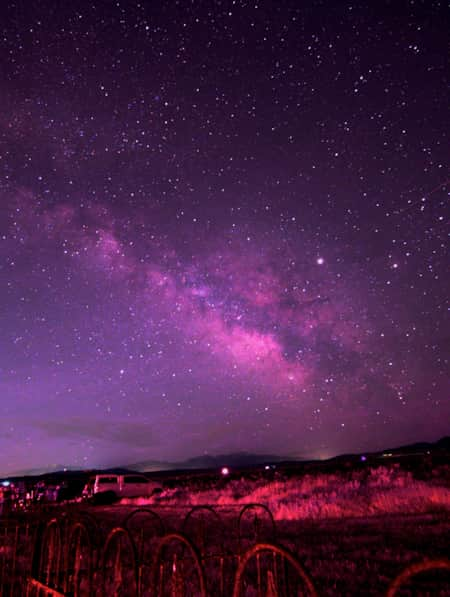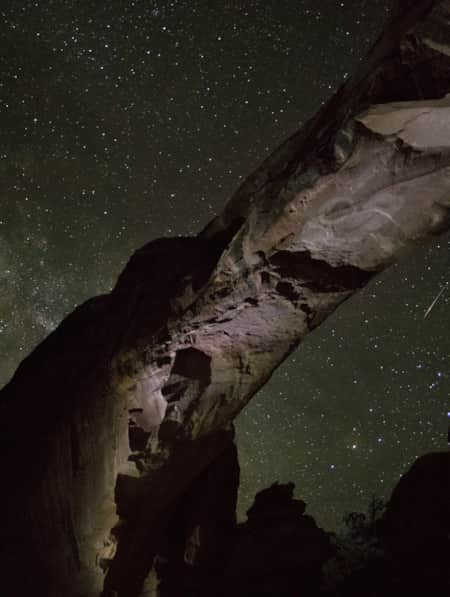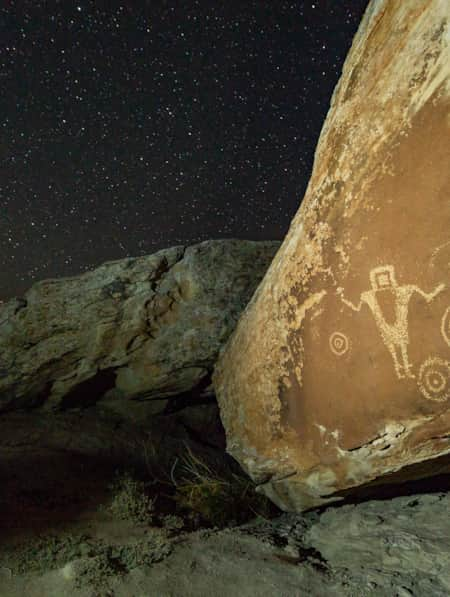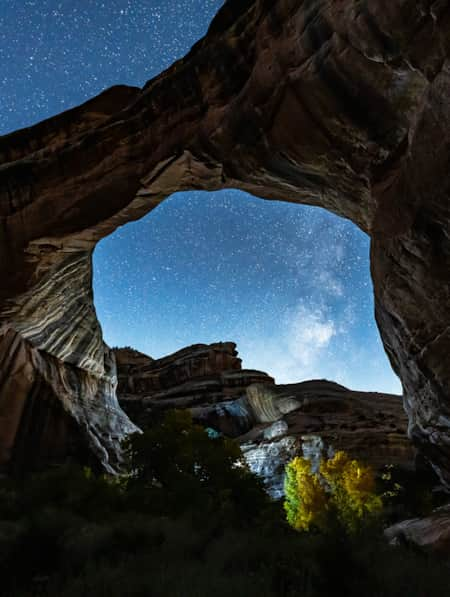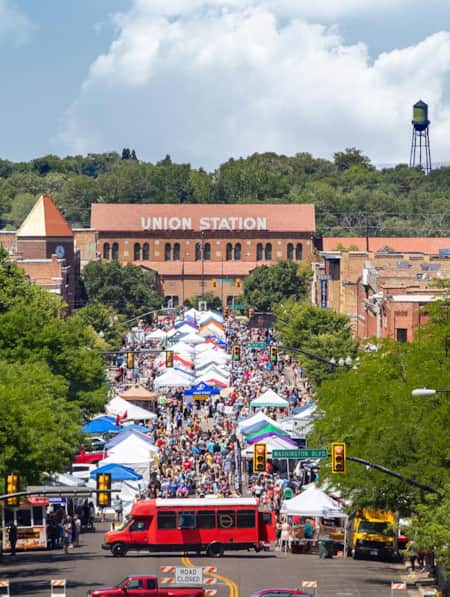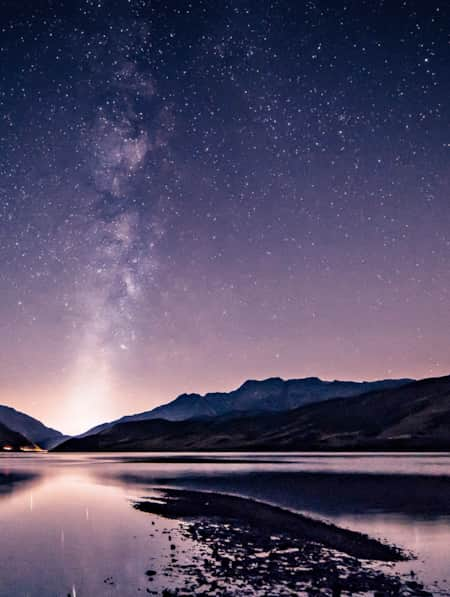- Home
- Places To Go
- Dark Sky Parks
Dark Sky Parks
Certified Dark Sky Places in Utah
"For my part I know nothing with any certainty, but the sight of the stars makes me dream."
– Vincent van Gogh
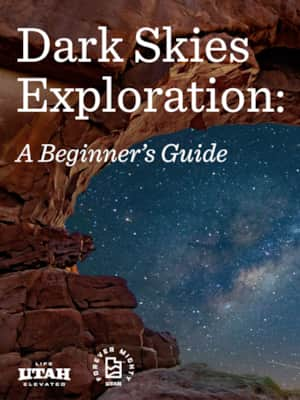
Beginner's Guide to Dark Sky Exploration
Whether you’re looking for easy entry into the world of dark skies (aka astrotourism), want to discover a new or different spot, or you want to go off the beaten path, Utah offers the most options for your stargazing adventure.
Northern Utah
-

Antelope Island State Park
Antelope Island beckons you to stargaze from the salty remnants of an ancient lake. The closest certified park to Salt Lake City, Antelope Island offers fantastic sunset viewing from Buffalo Point and Frary Peak. Plan a quick escape from the city for a weekend camping trip that combines bison sightings, sunset hikes and incredible dark skies for astrophotography or getting lost in.
-

Dinosaur National Monument
Dinosaur National Monument boasts some of the most magnificent Dark Skies in the state as a designated International Dark Sky Park, perfect for stargazing and connecting with the monument's primordial foundation. Look for Dark Sky programs at the Split Mountain Campground.
-

East Canyon State Park
Although East Canyon State Park is just 35 miles from Salt Lake City, the mountains provide a blockade for light pollution. At night, visitors are treated to an array of black skies and starry constellations. The park hosts dark sky star parties throughout the year, with scopes set up for night viewing.
-

Jordanelle State Park
Jordanelle State Park is situated on the east side of the Wasatch Mountains. Although the park is close to Park City, Midway and Heber City — the surrounding hillsides and mountains provide a blockade for light pollution. The park hosts dark sky events and its Rock Cliff Nature Area boasts the darkest skies in the park.
-

North Fork Park
This sprawling county park tucked into a canyon near Ogden is one of the few places you can still see the Milky Way near an urban center — in part because the mountains block light pollution from the Wasatch Front and Cache Valley and because of successful local efforts to limit light pollution in the park.
-

Rockport State Park
Rockport State Park sits at a base elevation 6,000 feet above sea level in a rural valley between the Wasatch and Uinta mountain ranges. The surrounding mountains create a protective halo that blocks out light pollution from the nearby communities. Park staff host popular public programs on best dark sky practices and the importance of dark skies for the areas nocturnal species.
-

Steinaker State Park
Steinaker State Park is the fourth Utah state park to receive dark sky designation and an ideal place for remote adventure. A reservoir nestled between Ashley National Forest and Dinosaur National Monument, there is no shortage of four-season beauty and exploration. Overnight in Vernal or the heated cabin and campgrounds at Steinaker State Park.
-

Timpanogos Cave National Monument
Famous for it’s spectacularly decorated caverns of helictites, stalactites and stalagmites, Timpanogos Cave National Monument has a new designation — the first National Park Service unit to be certified as an Urban Night Sky Place. In partnership with the Uinta-Wasatch-Cache National Forest and local astronomy groups, the park offers popular summer night sky programs in American Fork Canyon.
Southeastern Utah
-

Arches National Park
After the sun sets and the sandstone has cooled you can see countless stars set against a pitch black night sky. See the night sky like you may never have before after dark in Arches National Park.
-

Canyonlands National Park
Wave after wave of deep canyons, towering mesas, pinnacles, cliffs and spires stretch across 527 square miles. Outfitters in and around Canyonlands National Park offer one-day to multi-day stargazing expeditions.
-

Dead Horse Point State Park
Dead Horse Point State Park was the first Utah State Park to achieve IDA certification. Except in winter, the park offers multiple evening events each month, such as night hikes, telescope programs and constellation tours. Even in poor weather conditions, multimedia astronomy talks can be held inside the visitor center.
-

Goblin Valley State Park
Fun and goofy by day, slightly spooky at night, Goblin Valley sits on a remote corner of the Colorado Plateau and inside the San Rafael Swell, which means its location attracts a lot less crowds. But, don’t be fooled, it’s one of the most spectacular — and ghoulish — places in the world to view the Milky Way.
-

Goosenecks State Park
Goosenecks State Park is an easy-to-get-to area with a million-dollar view. Look down upon the San Juan River 1,000 feet below and see the results of 300 million years of erosion. Look up, and Goosenecks’ night skies rival its sensational geological formations. People from around the world travel to this remote park to immerse themselves in its terrestrial and celestial magnificence.
-

Hovenweep National Monument
In 2014, the International Dark-Sky Association designated Hovenweep an International Dark Sky Park. Hovenweep trails are open sunrise to sunset daily. Stargazing and exploring the night sky is allowed from the visitor center parking lot and campground. Rangers present stargazing programs in spring and summer.
-

Natural Bridges National Monument
Natural Bridges National Monument was the world's first Dark Sky Park due to its remoteness and dedication to zero light pollution. The park’s visitor center, exhibits and campground are open year-round.
-

Rainbow Bridge National Monument
Rainbow Bridge National Monument is the first International Dark Sky Sanctuary in the National Park Service. The monument itself can only be accessed by boat on Lake Powell or by backpacking from Navajo Mountain, but the entire Glen Canyon National Recreation Area boasts dark skies.
Southwestern Utah
-

Bryce Canyon National Park
Far from the light pollution of civilization, and protected by a special force of park rangers and volunteer Utah astronomy enthusiasts, Bryce Canyon is known as the last grand sanctuary of natural darkness and has one of the nation’s oldest astronomy programs. For families visiting from the city, staying up for the star show is quite a reward. During moonless and clear nights, 7,500 stars will welcome you to their domain. Bryce Canyon also has an annual Astronomy Festival.
-

Capitol Reef National Park
Utah’s hidden gem of a national park, Capitol Reef, is almost like a planet unto itself. Here you get a real feel for what the earth might have been like millions of years before life appeared, when nothing existed but earth and sky. Stay up for night skies in a land like no other. Pair your visit with a visit to Torrey, a certified Dark Sky Community.
-

Cedar Breaks National Monument
Far from any metro light pollution and high in altitude makes sleeping under the stars at Cedar Breaks National Monument's updated campground first class. Rangers holds stargazing programs throughout the summer months.
-

Fremont Indian State Park
The site of the largest Fremont settlement yet discovered, Fremont Indian State Park is also renown for its captivating dark skies. Located in Fishlake National Forest, here you can explore the ancient petroglyphs and pictographs of the scenic canyon by day, and the Milky Way galaxy by cover of night.
-

Snow Canyon State Park
Ivins, UT
Located at the edge of the Mojave Desert, Great Basin and Colorado Plateau, Snow Canyon State Park explodes with dramatic geology perfect for your outdoor adventure — and photo opportunities.
-

Zion National Park
After the sun sets and the orange glow leaves Zion’s canyon walls, the park falls under a dark sky of endless stars. Many visitors may gaze into Zion’s dark skies to find more stars than they’ve ever seen before. When you enter the park, you leave the ambient light of every-day life, making every detail of the night sky more visible. The campgrounds are a great place for stargazing, along with the park’s various viewpoints.
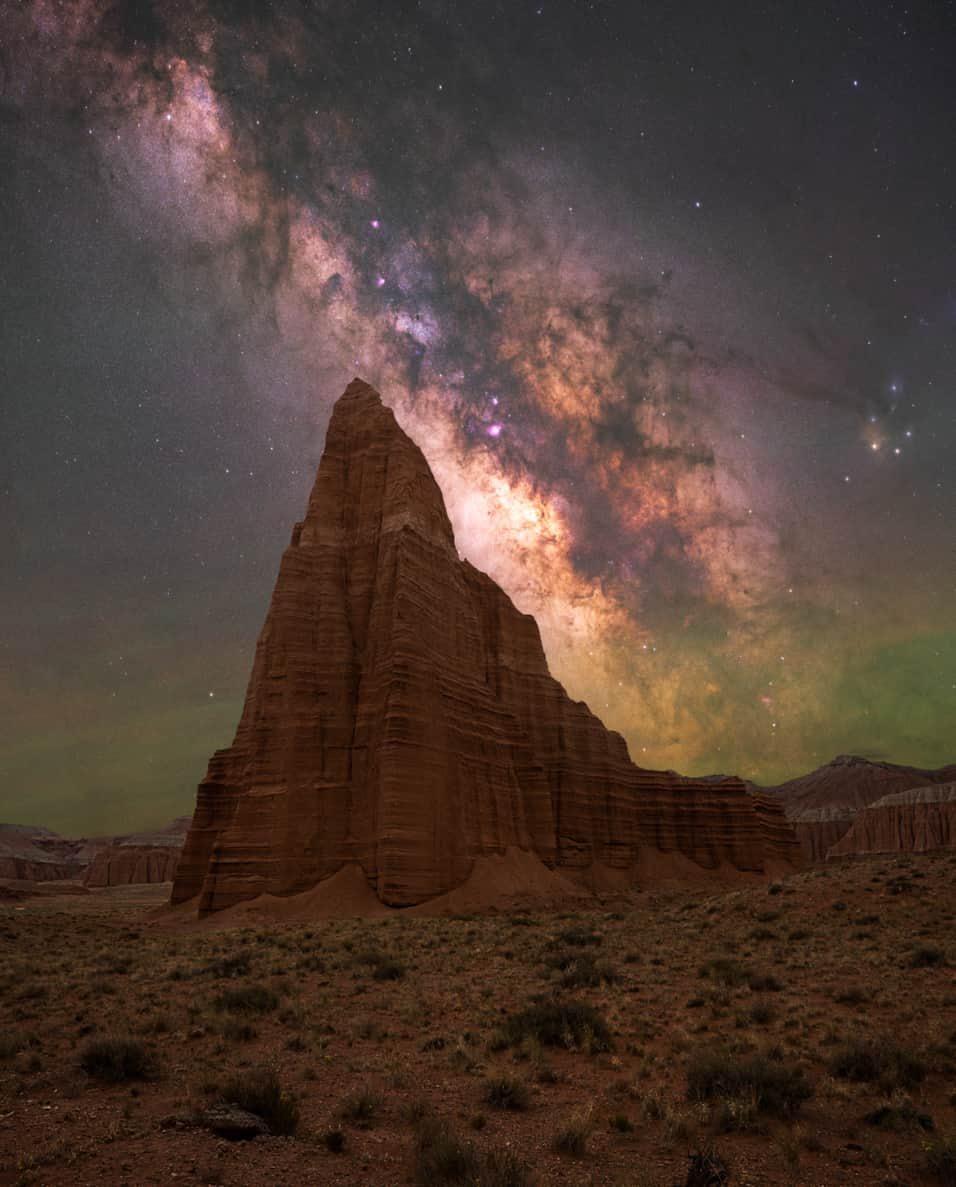
01
5 Days
Red Rock & Dark Skies: Stargazing the National Parks
This road trip through southwest Utah takes you to four of Utah’s best places to see the Milky Way — Capitol Reef National Park, Kodachrome Basin State Park, Bryce Canyon National Park and Cedar Breaks National Monument.
Adventure, Scenic Drives/Road Trips, Solitude, Stargazing
Highlights
- Hell's Backbone Grill
- Bryce Canyon Lodge
- Ranger-led Star Programs
- Road Trip Southwest Utah

02
6 Days
Stars by the City
Fill your days with adventure and your nights with stargazing by following this six-day itinerary from Salt Lake City through the International Dark Sky Places in Northern Utah.
Hiking, Kid-Friendly, Scenic Drives/Road Trips, Stargazing, Arts, Urban Experiences
Highlights
- Timpanogos Cave National Monument
- East Canyon State Park
- Jordanelle State Park
- Rockport State Park
- Antelope Island State Park
- North Fork Park
- Helper
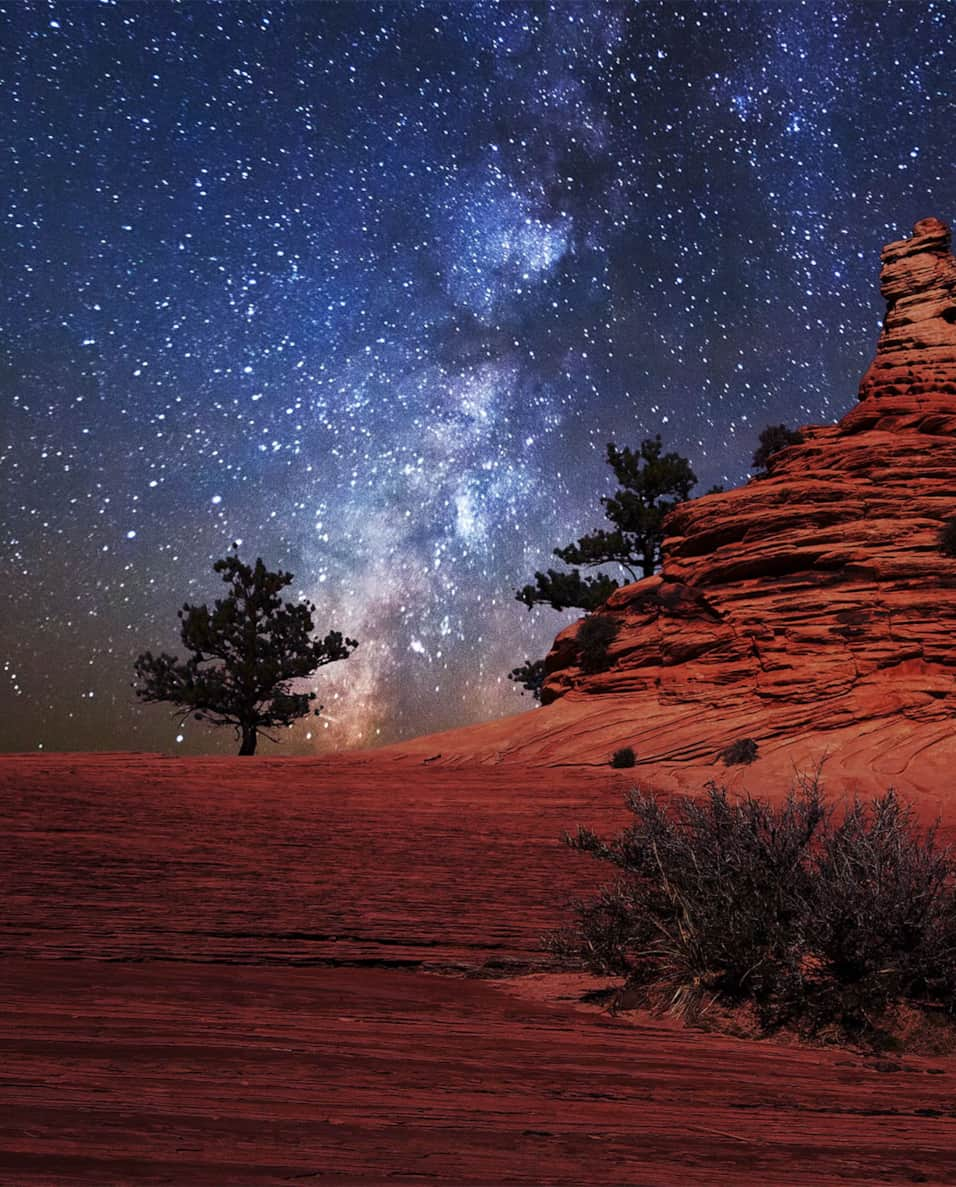
03
7 Days
Hoodoos and Stars
Hoodoos and Stars takes advantage of the proximity of Zion, Bryce and Capitol Reef national parks to slow down and also experience some of the must-see southwestern Utah landscapes and experiences along the way.
Hiking, Kid-Friendly, Scenic Drives/Road Trips, Stargazing, Camping & Backpacking
Highlights
- Zion National Park
- Bryce Canyon National Park
- All-American Road Scenic Byway 12
- Capitol Reef Country
- Kodachrome Basin
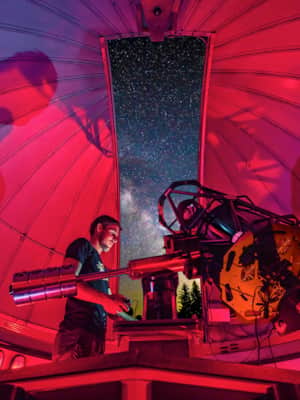
Guides and Tours
Let an expert show you the stars — many of Utah's dark sky parks offer ranger-led night sky events. And local guides and observatories also book telescope adventure tours.
Dark Sky Communities
Bluff
Tucked between sandstone cliffs and the San Juan River, Bluff is rich in human and natural history and is a central point along the Trail of the Ancients National Scenic Byway. Thanks to community dedication to preserving dark skies, Bluff was also named an International Dark Sky Community in 2025.
Castle Valley
Known for its sculptured red rock just north of Moab, the town of Castle Valley joined the ranks of Utah's Dark Sky Communities at the beginning of 2024.
Helper
Located near Nine Mile Canyon and along the way to more popular Southern Utah adventures, this former mining and railroad town continues to grow, giving travelers a glimpse into a community of art, history and stories of the power of togetherness. The town rallied its locals to protect and share its natural dark skies, leading to its certification of being an International Dark Sky Community. Helper's nearby Dark Sky Observers lead regular astronomy programs and special events in the area.
Moab
Located on the Colorado Plateau, Moab welcomes millions of visitors each year. Gateway to Arches and Canyonlands national parks as well as Dead Horse Point State Park, the town is a world-class outdoor destination with incredible dark skies. In 2016, area officials began efforts to reduce light pollution. By 2019, an outdoor lighting ordinance was passed and updated in 2023. Moab became an official dark sky community in 2024.
Springdale
As a gateway to Zion National Park and nestled along the North Fork of the Virgin River, Springdale is an ideal place to get outfitted for adventure not only in Zion, but to numerous other parks, monuments and recreation areas of the western Colorado Plateau and desert southwest. And thanks to its elevation, relative remoteness and dark sky preservation efforts of locals, it's also a great place for stargazing.
Torrey
Located just eight miles from the west entrance of Capitol Reef National Park, Torrey is an idyllic little tree-lined, high-elevation town on the Capitol Reef Country Scenic Byway (S.R. 24) surrounded by rose-colored cliffs and green meadows. The town came together to protect its night skies by improving outdoor lighting ordinances and retrofitting dark-sky compliant outdoor lighting to minimize light pollution and strengthen the town’s already close relationship with nature, place and the universe.
MORE DARK SKIES
The University of Utah’s South Physics Observatory in Salt Lake City offers free public star parties on clear Wednesday nights. During the visit, expect to see galaxies, nebulae, stars, moons, planets and clusters. Opening times vary throughout the year, check observatory.astro.utah.edu for more information.
Read the Stories
-

Utah After Dark
Written By Kim Heys
When the sun goes down in Utah, a celestial show is about to begin.
-

How to Stargaze in Utah
Written By Whitney Childers
7 minute read
Tips on what to pack and when and where to go stargazing in Utah.
-

Reclaiming the Stars: Utah’s Dark Sky Initiative
Written By Austen Diamond
4 minute read
Utah's Dark Sky Initiative helps state park visitors experience the cosmos by protecting night skies, encouraging astrotourism and promoting stargazing.
-

Tips for Astrophotography
Written By Visit Utah
3 minute read
Need tips on how to take pictures of stars? Utah is the perfect location to put tips from an award-winning photographer into action.
-

Seeking Starry Skies Near Salt Lake City
Written By Haley Rodgers
3 minute read
You don’t have to go far from the city to find dark skies filled with stars in Utah. Find out where you can see the Milky Way near the city or gaze into space from an observatory in Northern Utah.
-

A Party of Astronomic Proportions
Written By Matcha
Every Saturday from May through Labor Day weekend, weather dependent, crowds ranging from 100 to 500 people gather at Cedar Break’s main overlook, Point Supreme, to gaze up at the region’s amazing dark skies and explore the stars and the planets that make up the solar system.
-

State Park Stargazing: Interacting With the Galaxy in Real Time
Written By Whitney Childers
4 minute read
Northern Utah's Camp Floyd State Park offers more than history to those who stick around after dark. With intense dark skies blanketing the atmosphere, stargazers of all ages gather to interact with the galaxy above.
-

Dark Skies in Capitol Reef National Park
Written By Matcha
Capitol Reef National Park in Utah is a designated International Dark Sky Park. Make plans to come see the most magnificent night sky ever!
-

Where to Find the Darkest Skies in Central Utah
Written By Matcha
5 minute read
A tapestry of thousands of stars awaits visitors to Helper and Price where conditions are some of the best for exploring the night sky.
-

The World's First Dark Sky Park
Written By Matcha
On March 6, 2007, Natural Bridges National Monument became the first International Dark Sky Park certified by the International Dark-Sky Association. More than 100,000 people visit Natural Bridges each year to check out the stunning bridges and hike in cool canyons, but only a handful of them stay through the night to see the area’s most amazing and unique feature: dark skies and glistening, bright stars.
-

Ogden Activities: Downtown to Dark Skies
Written By Paula Colman
5 minute read
Two days' worth of sun-up-to-sundown Ogden activities — eat, shop and bike where the locals go, end at an International Dark Sky park.
-

Looking Up: Dark Skies of Heber Valley
Written By Kristen Pope
3 minute read
A trio of state parks in Heber Valley offer stellar views of the Utah night sky. Come stargaze here.
-

Discover Dinosaur Astronomy
Dinosaur National Monument's celebrated dark skies can offer some of the most inspirational looks into our universe given the monument's unique context: see the stars on an unblemished canvas like our human — or dinosaur — predecessors did.
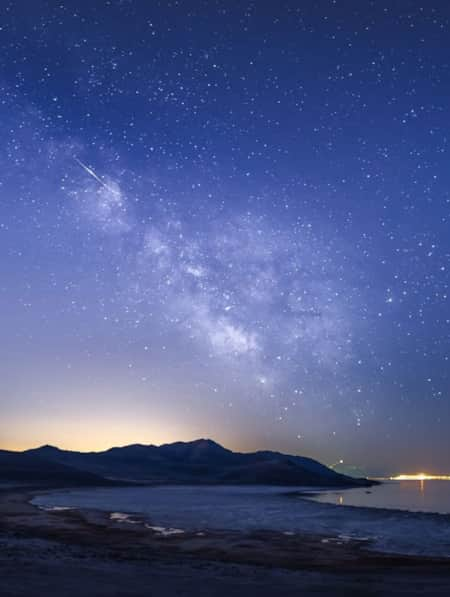
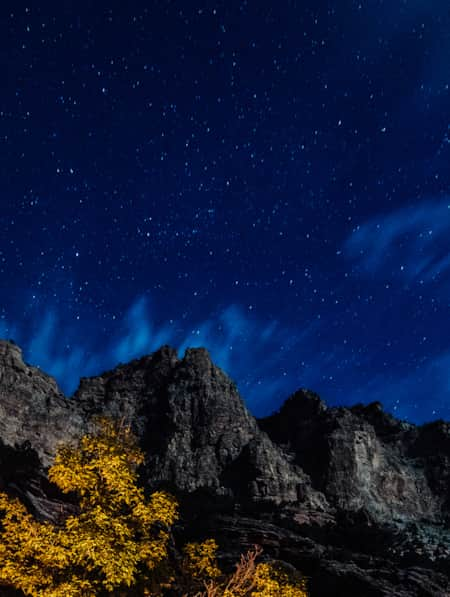
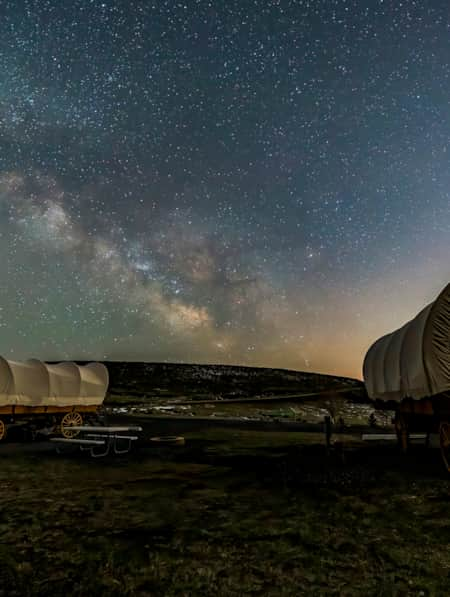
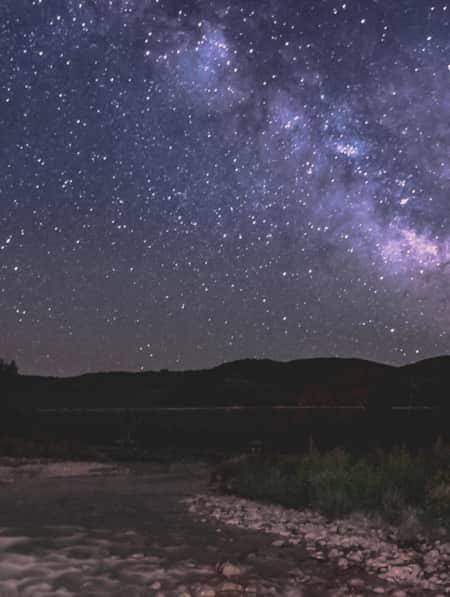
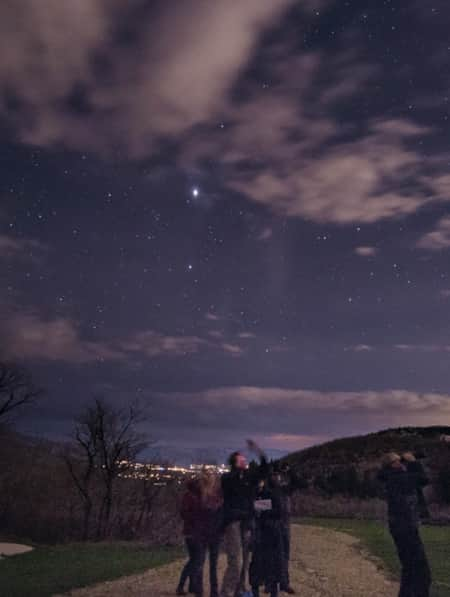
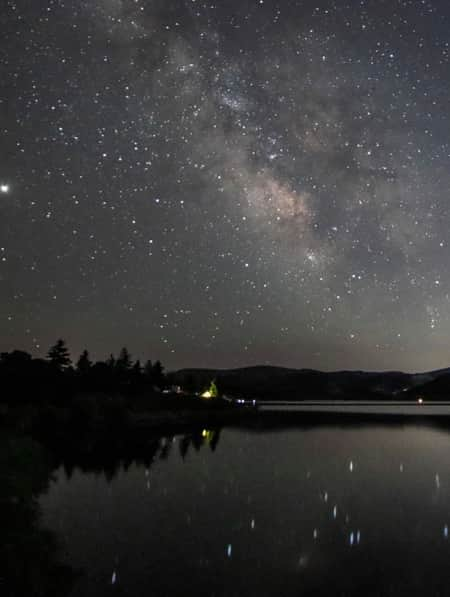
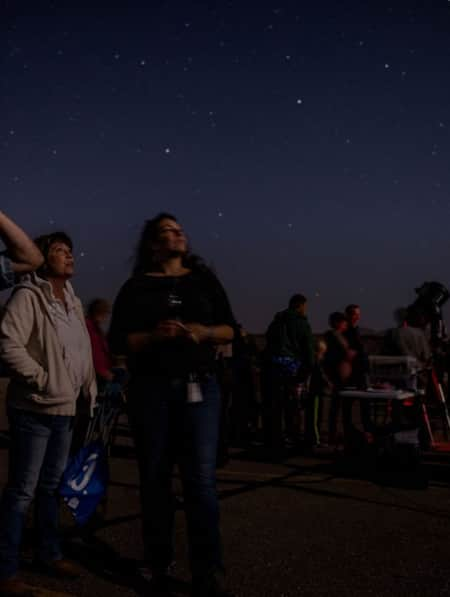
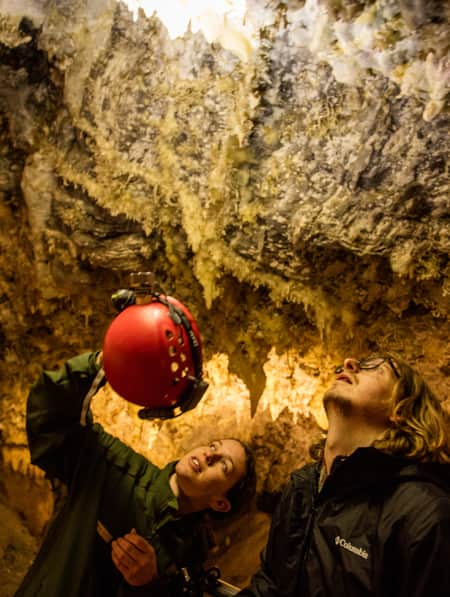
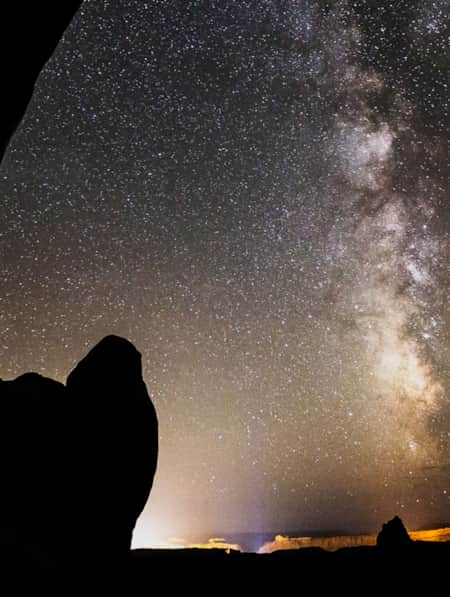
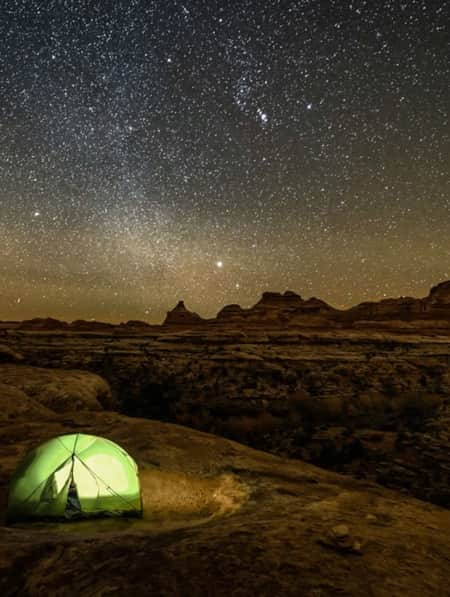

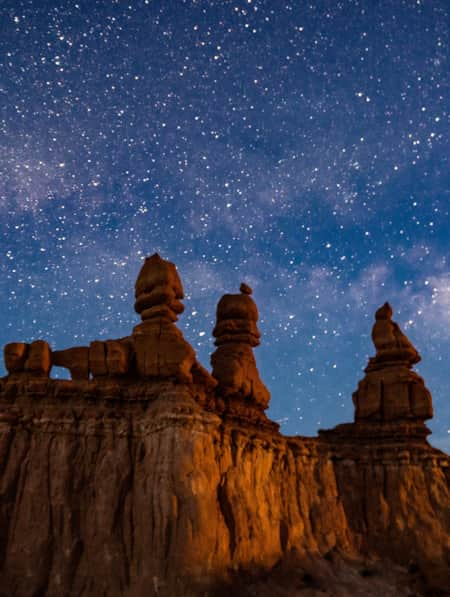
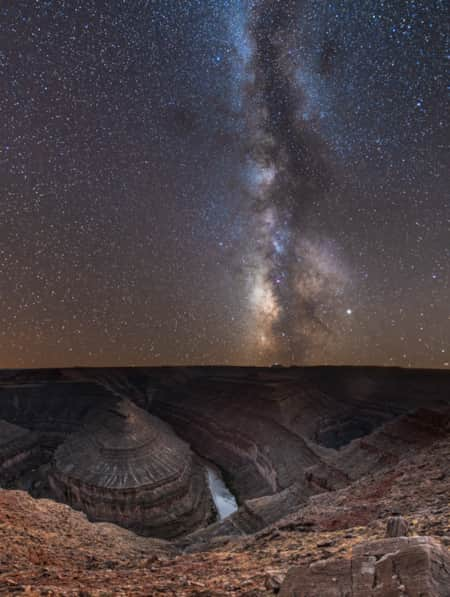
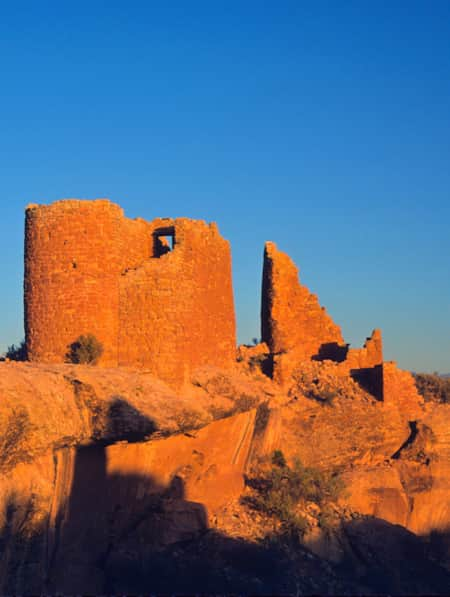
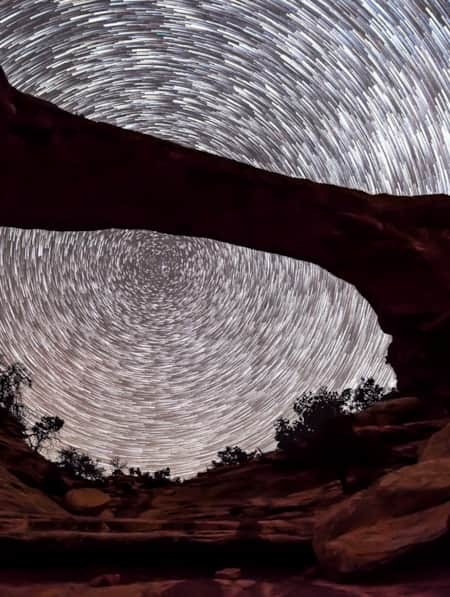
.jpg?w=450&h=597&mode=crop&quality=65)
